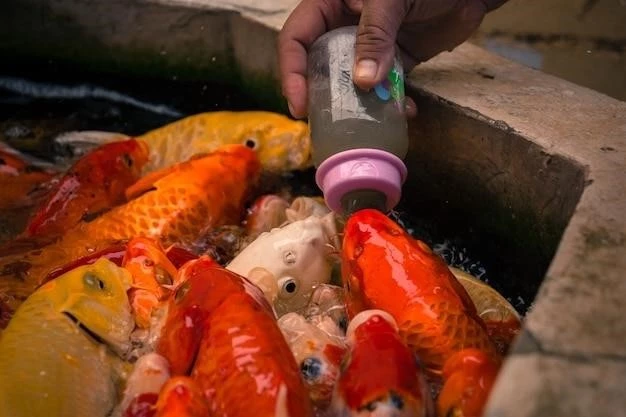Overview of Seafood Poisoning
Seafood poisoning is a serious health risk associated with consuming contaminated fish and shellfish․ Different toxins can cause various symptoms‚ leading to significant health concerns․
Different Types of Shellfish Poisoning
Shellfish poisoning encompasses various syndromes‚ including paralytic shellfish poisoning (PSP)‚ neurotoxic shellfish poisoning‚ amnesic shellfish poisoning‚ and diarrhetic shellfish poisoning․ Each syndrome is caused by different toxins present in contaminated shellfish‚ leading to distinct sets of symptoms and health risks․

Causes and Symptoms
Seafood poisoning can result from consuming contaminated fish and shellfish‚ leading to a variety of symptoms affecting the gastrointestinal and neurological systems․
Sources of Contamination
Seafood contamination can arise from toxins produced by dinoflagellates or cyanobacteria‚ affecting marine species like oysters‚ clams‚ mussels‚ scallops‚ crustaceans‚ and certain fish․ Consumption of contaminated marine organisms can lead to poisoning‚ manifesting in neurological and gastrointestinal symptoms․
Common Symptoms of Seafood Poisoning
Seafood poisoning can result in various symptoms‚ including nausea‚ vomiting‚ diarrhea‚ abdominal cramps‚ neurological manifestations like tingling and weakness‚ and in severe cases‚ paralysis and respiratory distress․ The onset and severity of symptoms may vary depending on the type of toxin ingested․

Specific Syndromes and Toxins
Shellfish poisoning can encompass various syndromes‚ including paralytic shellfish poisoning‚ neurotoxic shellfish poisoning‚ amnesic shellfish poisoning‚ and diarrhetic shellfish poisoning․ These syndromes are caused by different toxins present in contaminated shellfish‚ leading to distinct sets of symptoms and health risks;
Paralytic Shellfish Poisoning (PSP)
Paralytic shellfish poisoning (PSP) is a severe form of shellfish poisoning caused by consuming shellfish contaminated with saxitoxins produced by certain dinoflagellates․ This potent neurotoxin affects a range of shellfish‚ with clams and mussels being common sources of PSP outbreaks‚ leading to serious health implications․
Ciguatera Fish Poisoning (CFP)
Ciguatera fish poisoning (CFP) is caused by consuming certain reef fish that accumulate ciguatoxins․ This toxin can lead to symptoms like gastrointestinal issues‚ neurological effects such as tingling‚ and in severe cases‚ cardiovascular problems․ Reef fish like groupers and barracudas are commonly associated with CFP․
Prevent seafood poisoning by avoiding raw or undercooked fish and shellfish․ Cook seafood thoroughly to kill harmful toxins and bacteria․ Seek medical attention if symptoms of poisoning develop․
Prevention and Treatment
Prevent seafood poisoning by avoiding raw or undercooked fish and shellfish․ Ensure proper cooking to eliminate harmful toxins․ Seek medical attention if symptoms of poisoning occur for appropriate treatment․
Treatment Options for Seafood Poisoning
When experiencing seafood poisoning‚ treatment focuses on managing symptoms such as nausea‚ vomiting‚ diarrhea‚ and abdominal pain․ Medical care may involve fluid replacement to address dehydration and electrolyte imbalances․ Severe cases may require supportive care and monitoring for complications․
Seafood poisoning outbreaks highlight the need for ongoing research into toxins present in fish and shellfish․ Investigating the sources and biology behind specific syndromes like paralytic shellfish poisoning is crucial for developing effective prevention strategies․
Research on seafood poisoning is ongoing‚ with recent investigations focusing on understanding the toxins present in fish and shellfish․ These studies aim to improve prevention strategies and enhance public health responses to outbreaks linked to contaminated seafood․
Outbreaks and Current Research
Current investigations focus on understanding the toxins in fish and shellfish‚ contributing to the enhancement of prevention strategies and public health responses to outbreaks related to contaminated seafood․ Ongoing studies on paralytic shellfish poisoning shed light on toxin sources and biological mechanisms․
Proper monitoring of seafood for toxins is essential to mitigate risks of seafood poisoning․ Public health authorities issue alerts and respond promptly to contamination incidents to ensure public safety․
Public Health Concerns and Safety Measures
Regular monitoring of shellfish in coastal areas is crucial to detect and prevent the presence of biotoxins that can lead to seafood poisoning․ Public health alerts and responses to contamination incidents are essential for safeguarding public safety and health․
Public Alerts and Responses to Seafood Contamination Incidents
Public health authorities issue alerts promptly when seafood contamination incidents arise to ensure swift responses in safeguarding public safety․ These measures include identifying contaminated sources and taking necessary actions to prevent further exposure․
